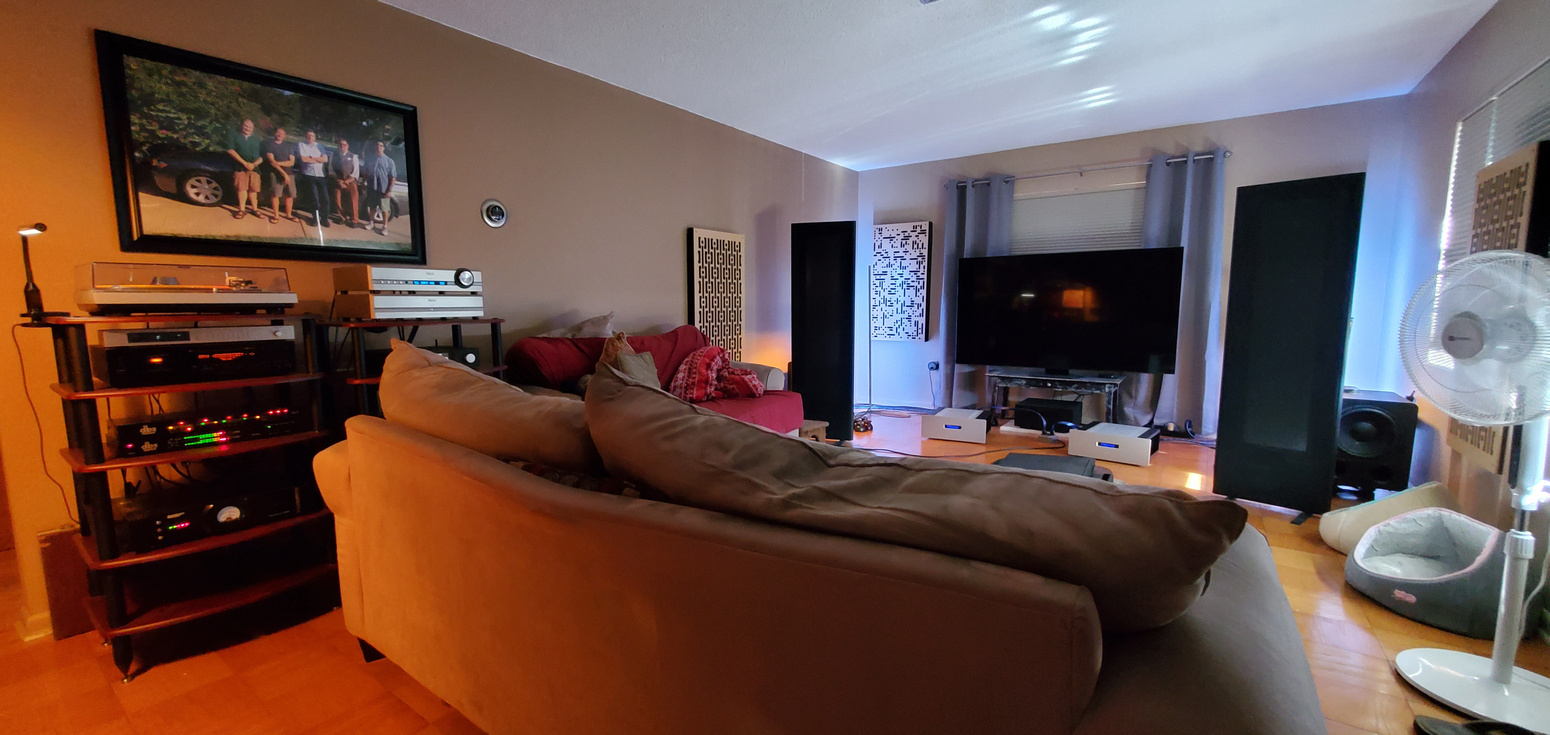Some of you might know that I have upgraded from my Emotiva XPA-2 Gen 2 amp to a beautiful pair of Odyssey Audio Stratos monoblock amps.
Anyway, I've known for some time that these amps do not utilize true balanced inputs, they are just convenience XLR's tapped into the standard unbalanced RCA connectors. That said, many owners of Odyssey amps claim that unbalanced interconnects actually sound better. This is all fine and dandy except for the fact that I need a 30 ft run of cable to reach from the XP-20 to the Stratos amps.
I've never run unbalanced cables that long other than in car audio, and that was usually 17 ft to 20 ft at most, and with an AudioControl line driver up front right off of the head unit to boost the head unit's preamp voltage (usually 2v t0 4v) up to 9.5v rms (13v peak).
Considering the XP-20 has a max output of 7v (nearly 15v or so around clipping which I would never run my system that hard), I think that I should probably be fine running 30 ft of cable in the house.
My question is, what are your experiences running a good length of unbalanced interconnects in your systems? Did you find one brand or series better than the other?
Since the majority of my cables are Wireworld, I think I'd like to keep with them, and most likely upgrade some of them as well along the way.
Many thanks in advance!

Anyway, I've known for some time that these amps do not utilize true balanced inputs, they are just convenience XLR's tapped into the standard unbalanced RCA connectors. That said, many owners of Odyssey amps claim that unbalanced interconnects actually sound better. This is all fine and dandy except for the fact that I need a 30 ft run of cable to reach from the XP-20 to the Stratos amps.
I've never run unbalanced cables that long other than in car audio, and that was usually 17 ft to 20 ft at most, and with an AudioControl line driver up front right off of the head unit to boost the head unit's preamp voltage (usually 2v t0 4v) up to 9.5v rms (13v peak).
Considering the XP-20 has a max output of 7v (nearly 15v or so around clipping which I would never run my system that hard), I think that I should probably be fine running 30 ft of cable in the house.
My question is, what are your experiences running a good length of unbalanced interconnects in your systems? Did you find one brand or series better than the other?
Since the majority of my cables are Wireworld, I think I'd like to keep with them, and most likely upgrade some of them as well along the way.
Many thanks in advance!














